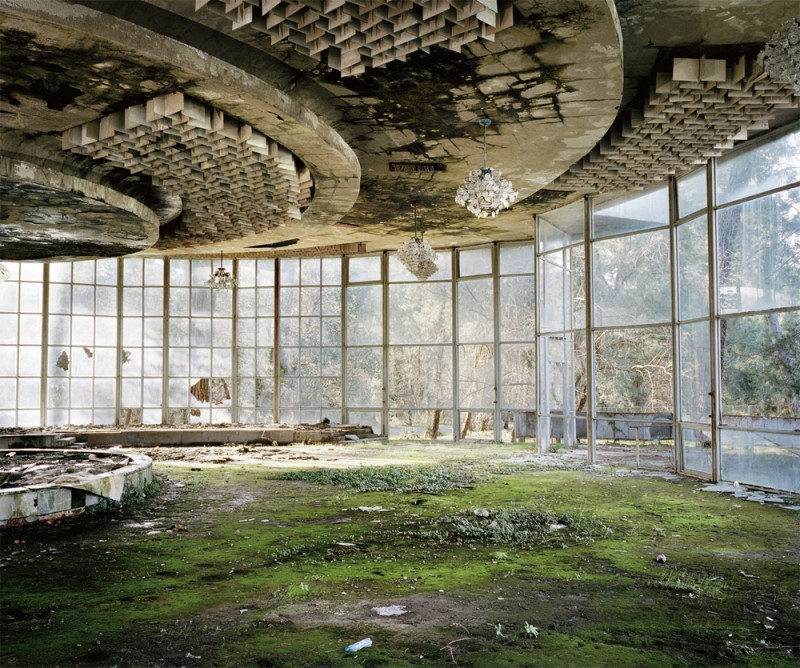The Art of Slow Journalism
Rob Hornstra

Rob Hornstra, Hamzad Ivloev, Nazran, Ingushetia, 2012, from The Sochi Project: An Atlas of War and Tourism in the Caucasus, Aperture, 2013. All images: c Rob Hornstra/Flatland Gallery. Coutesy CONTACT Gallery, Scotiabank CONTACT Photography Festival, Toronto.
“I’m completely addicted to this kind of project,” is the way Rob Hornstra explains his attraction to Sochi, the area of Russia he first visited over Christmas in 2006 and travelled to until his visa was revoked by the Russian government last July. Over the course of almost seven years, the Dutch photographer and his collaborator, writer Arnold van Bruggen, visited the region 11 times, taking pictures and writing about the complex social and political conditions in the North Caucasus. To date, they have produced seven books, including Empty Land, Promised Land, Forbidden Land, The Secret History of Khava Gaisanova and An Atlas of War and Tourism in the Caucasus, the latter published by Aperture in 2013. The books are an inventive and layered document of what life is really like in the region in and surrounding Sochi, the site of the 2014 Winter Olympics, and it bears little resemblance to the place presented during the games. “Our intention was to show a different picture from the vision of glitter and glamour that Putin wanted the rest of the world to see,” Hornstra said in Toronto. (“The Sochi Project” was on exhibition at the CONTACT Gallery as part of the Scotiabank CONTACT Photography Festival from May 1 to 31, 2014). “The reality was you could be sitting on the beach in Sochi and less than 24 hours later, a stone’s throw from the Olympic Stadium, a policeman who jumped on a hand grenade lost his legs, an arm and his sight.”
Hornstra and van Bruggen practise a form of reporting called “slow journalism,” in which research and time allow a deeper investigation. “Arnold and I prefer to say that we are the authors of the Sochi Project,” Hornstra says. “I am a documentary photographer but I think what we do is closer to art than to journalism because we don’t intend to be objective. We don’t want to make an overview of the North Caucasus. These are our stories, our views and our vision.”

Rob Hornstra, Pistunda, Abkhazia, 2009 and 2013, from The Sochi Project: An Atlas of War and Tourism in the Caucasus, Aperture, 2013.
The stories are bleak. The region has been a violent one since the 19th century and tensions increased as a result of the break-up of the Soviet Union. Added to the overall independence questions are problems within the breakaway republics themselves. “The struggle for independence is easy to understand,” Hornstra admits, “but the ethnic and religious differences go much deeper and make it much more complicated.” He admits that their work in the North Caucasus has uncovered a rooted sense of resignation. “The people don’t believe that things will change. What is important to them and what they care about is their garden, their house and their family and friends. But they try to get away from the police and the government. They’re the enemy, so the best they can hope for is that the authorities will leave them alone.”
Hornstra can’t leave the country alone. Once their visa restrictions are lifted in two years, he wants to return. “We have seen many more subjects that we want to cover. What we have done is just one chapter in our final project. When the authorities give me the possibility,” he says without hesitation, “I’ll go back immediately.” ❚

